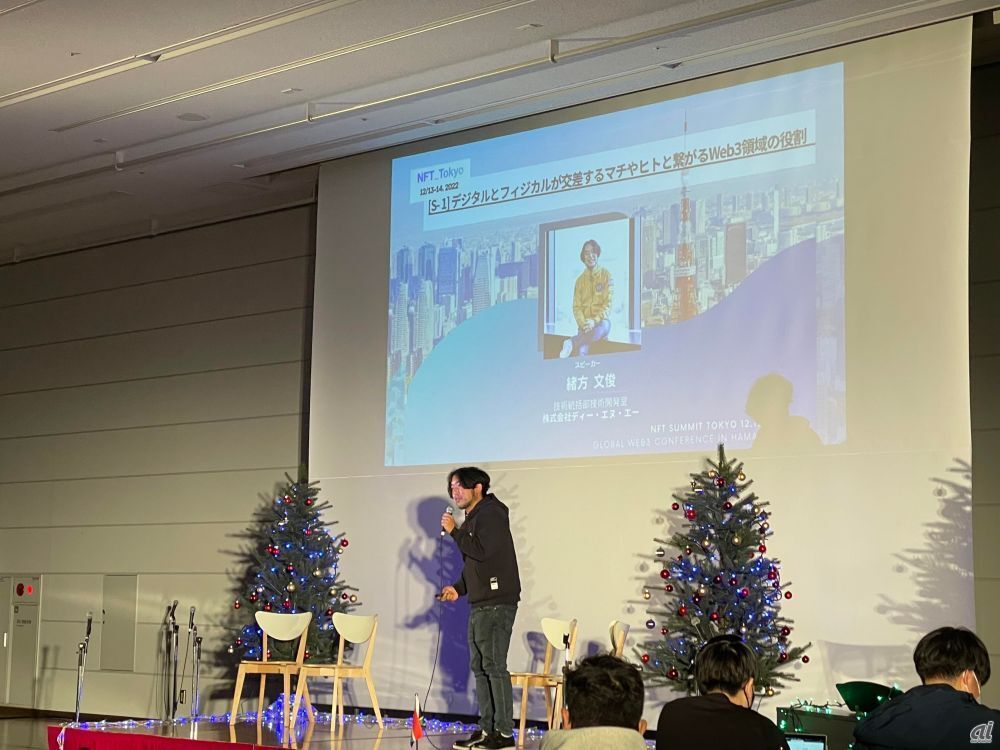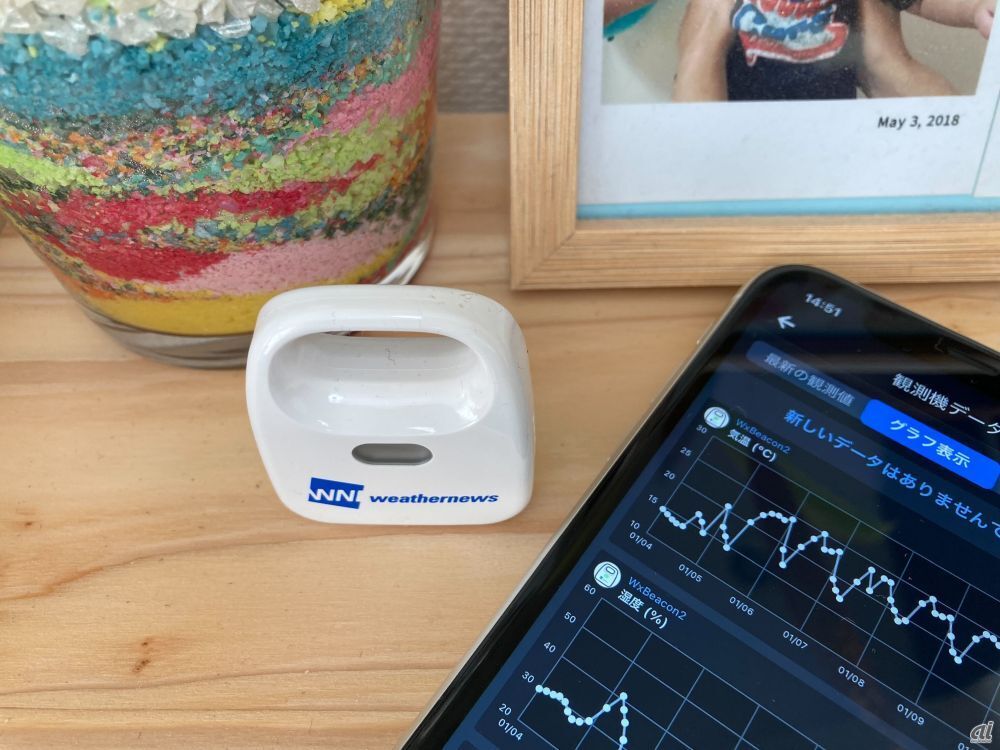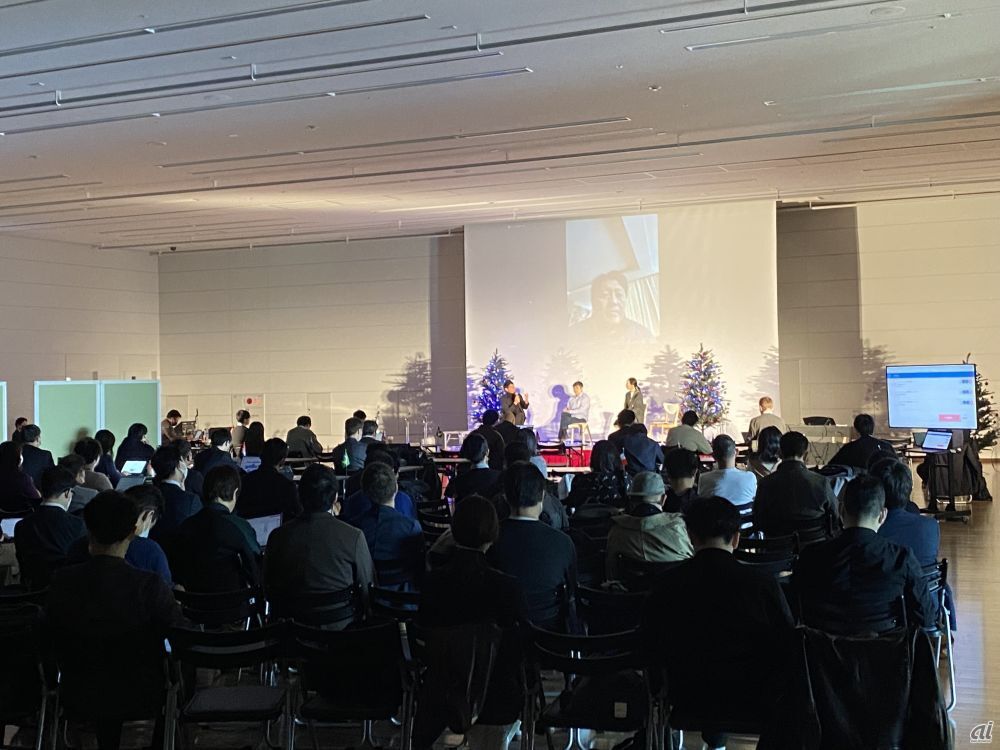Possibilities of Web 3 Areas in Urban Development-The Role of Sensors and Blockchain Technology Japan Top News
[ad_1]
NFT_Tokyo was held in December 2022, and DeNA was also a sponsor. This conference aims to share corporate NFT and Web3 case studies as a global Web3 community originating in Japan. participated in many I also gave a presentation on the theme of “the role of the Web 3 domain where people connect with the city where the digital and physical intersect”, so this time I would like to think about the possibilities of Web 3 with the theme of “town”. .
Combining digital and physical as visual information
The concept of connecting the digital and physical to urban development is not new, and the German government announced Industry 4.0 and Society 5.0 as part of its industrial policy in 2011. There has been talk of a highly integrated society. The CPS (cyber-physical system) that appears in it is defined as a system that uses sensors to analyze data collected from real space in cyber space, and uses the information created to solve social problems. The method of transferring the real space as it is to the digital space makes it easy to understand the image of the 3D model of the city such as the city.
Highly accurate 3D data is provided by the 3D city model open data “PLATEAU” all over Japan led by the Ministry of Land, Infrastructure, Transport and Tourism. A platform has been built that allows the simulation environment to be used on a global scale, and is also used in Microsoft’s Flight Simulator.
As a concept, a concept like CPS, which appeared early on, has been realized through the evolution of technology. I think it’s similar to
Print PLATEAU data with a 3D printer. Streets of Shibuya and Shinjuku (exported with a 3D printer owned by the author)
Recently, I have been paying attention to a technology called VPS (Visual Positioning System). Since the spring of 2022, tech companies such as Google and Apple have been actively researching it. Google has Geospatial API, Apple has Location Anchors, and Niantic has Lightship VPS. Technology. Simply put, it is a technology that accurately superimposes CG on the real world by targeting features such as scenery obtained from a camera.
Until now, the use case of placing virtual content in the city by augmented reality has been considered. For example, in 2009, Sekai Camera, which was devised in 2009, was expected to eliminate the need for searching by creating a worldview in which users can post photos and texts to specific locations. However, due to GPS accuracy issues, it has been technically difficult to superimpose with pinpoint accuracy. However, by using GPS and VPS together, it is now possible to match the direction and position you are facing with centimeter accuracy.
I myself am experimenting with superimposing CG on the real scene using this mechanism, and the appearance of superimposing large objects such as robots and dinosaurs is overwhelming. Of course, in addition to science fiction, it seems possible to operate a store that makes full use of digital technology, such as creating a virtual store, displaying clothes and shoes, and offering virtual fittings (try-on) if there is something you like. If we can set up a limited-time shop in a vacant lot in a rural area and create a system to send customers, we may be able to play a role in regional revitalization.
Niantic expresses how various communications occur on such a VPS grid as the real world metaverse (metaverse in the real world) concept.
In addition, by incorporating blockchain technology, it is possible to create a world view in which the real and digital are more closely intertwined, although recently the collaboration with NFT sneakers and other physical products has become a hot topic.
Blockchain technology for managing information of people living there
When it comes to the connection between the digital and the physical, the aforementioned technologies such as AR and VR are attracting attention, but there is also a relationship between the digital and the physical as an information management platform for the people who live there. From the end of 2022, the number of applications for the My Number Card will increase, and it is expected that it will gradually permeate our lives. -It is a digital policy called Estonia.
Digitization has been promoted using blockchain technology since around 2012, and 99% of administrative services such as personal data management can be performed digitally using a technology called KSI blockchain developed by Guardtime. It seems that it is. The Estonian government-issued digital identity and status management system called e-Residency allows residents from anywhere in the world to become residents. It is said that 85,000 people have been welcomed and more than 18,000 companies have been established.
You may be wondering whether it is necessary to manage the administrative system with blockchain. In the background of this, for Estonia, which is located along the border with Russia, in the unlikely event that the country is lost, it is meaningful that the country can be restarted by gathering citizens on a digital infrastructure. Things turn out to be important.
Recently, large-scale leakage of personal information has become a social problem, but data used in closed networks is surprisingly fragile once a vulnerability is discovered. On the other hand, blockchain technology can also contribute to securing data confidentiality at a high level by combining it with anonymization technology, which will be described later.
According to “Frontline of e-Estonia Digital Governance (Nikkei BP Marketing)”, various mechanisms through the Internet such as e-banking, e-tax, e-parking, e-geoportal, e-ticket, e-health seems to be well maintained. In addition to the infrastructure development, IT education and other mechanisms have been introduced as lifelong learning, and activities are being conducted to improve digital skills. In Japan as well, opportunities for elementary school students to come into contact with PCs and tablet terminals are increasing due to the GIGA school concept. In addition to infrastructure development, I think it is also important to pay attention to education.

On the first day of NFT_Tokyo, I gave a presentation titled “Roles of Web 3 areas where people and communities where digital and physical intersect.”
A future city that utilizes sensors is compatible with distributed systems
Since the data in the city is constantly changing, it is necessary to continue to acquire data in real time, rather than simply acquiring it once. Sensing technology makes this possible.
At the FIFA World Cup Qatar 2022, connected balls with sensors became a hot topic. Developed by German IoT startup KINEXON in collaboration with adidas, the ball contains an inertial measurement unit (IMU) inside the ball that can track the position of the ball with centimeter accuracy. it is. In another familiar place, at the amusement facility where I went to play with my children at the end of the year, there was a projector installed next to the ball pool, and there was a mechanism that painted the wall by throwing the ball. Looking at the ceiling, a LiDAR sensor was installed, and it seemed that the position of the ball was determined and the image was projected. In this way, there are countless IoT and sensor mechanisms in familiar places. It is said that the number of IoT devices will exceed 14.4 billion as of 2022, and it is believed that they will continue to permeate our lives.
The NFT application called PICKFIVE provided by DeNA, which I wrote about before, focuses on player behavior data called stats and provides fantasy sports play, but in cities, data such as people’s movement and behavior By providing this feedback, the optimization of shared buses and taxis will be carried out, making it more convenient and reducing the amount of carbon dioxide. When I first saw the smart trash cans that I see on the streets recently, I didn’t understand why they needed sensors, but I heard that by grasping the amount of trash, they help reduce collection costs and emissions. I was surprised.
Attempts to enrich people’s lives using such sensing technology have many leading-edge examples in places such as Barcelona, Spain and Hangzhou, China. Just as humans have eyes, noses, and ears, sensors are very important to the city.
Sensors can be placed comprehensively in buildings, etc., but in cases where the entire city is the stage, it is also effective to collect information from personal smartphones and existing devices. Due to recent energy problems, attention is being focused on systems such as smart meters that can monitor the amount of electricity and water from the outside, as well as smart street lights. It was a little while ago in the news, but there is also an interesting story that in Peru, GPS is attached to vultures and they are engaged in monitoring.
Weather News’ Minna de Tsukuru Weather Forecast, which I use regularly, contributes to the accuracy of weather forecasts by sharing data monitored by a sensor called WxBeacon2, a simple weather observation device. In such an overwhelmingly wide range, I think it makes sense to have a system that absorbs the collective intelligence of individuals in this way. In the midst of the COVID-19 pandemic, carbon dioxide concentrations have been measured in commercial facilities to “visualize ventilation,” but I believe that environmental monitoring will continue to be necessary in the future.
Currently, most of the data is provided free of charge, but if we can return the reward for providing the data, we may be able to collect more data. As a topic using blockchain, in “Mobility Economics” (Nihon Keizai Shimbun Publishing), an idea about a system where rewards are returned to IoT devices that collect various information around the vehicle while the vehicle is running is described. I’m here. In addition, in the service called “Helium”, a Wi-Fi network solution using blockchain, it seems that rewards are returned by setting up a Wi-Fi spot at home.
What is expected from the combination of blockchain and IoT is that micropayments, which are small payments according to the amount of usage, and individual devices themselves can have the concept of accounts called wallets. I think that each company is still in the trial and error stage regarding the economics of whether the rewards meet expectations, but if they can monetize sufficiently, they will be able to contribute significantly to the growth of the service itself.

Weathernews WxBeacon2 owned by the author.Observing, monitoring, and uploading temperature, humidity, pressure, brightness, noise, UV, etc. 24 hours a day contributes to the accuracy of the weather.
Achieving application interoperability by organizing zero-knowledge proofs and standards
When you move, you must have had to fill out different forms for gas, electricity, water, and so on many times, and wish they could be integrated. According to the Digital Agency, from around February 2023, it aims to be a one-stop service for moving through Mynaportal, etc., so I’m looking forward to it, but there are many difficulties in interoperating information between multiple organizations such as the government and the private sector. There is a difference. In particular, problems such as privacy are prominent, and in recent years it has become difficult to handle personal information.
Under such circumstances, a technology called “zero-knowledge proof” is attracting attention. This technology was invented in the 1980s, but it is attracting attention again with the theme of Web3 and blockchain. Simply put, it is a technology that makes it possible to prove only the fact that you know the password without revealing the password. Buying alcohol without revealing your date of birth, taking out a loan for real estate without revealing your assets, proving that you meet the application requirements for employment without revealing your educational background, etc. It is expected to be utilized.
For example, if you open “Find Wally” in the library and find the answer circled, you’ll be disappointed. You don’t have to circle the .
How do you prove it without giving the information? It seems like a magical technique, but there is a video that omits the mathematical explanation and explains it in a way that even children can understand, so if you are interested, please take a look.
In addition, this technology is used in a mechanism called rollup to speed up blockchain, and is also used in storage management mechanisms such as image data such as NFT. There was a lot of discussion at devcon in Bogota in 2022, but it is also a topic that is currently central to the blockchain tech stack.
Now, when considering interoperability, another hurdle is standards and formats. Recently, there was a topic that the format of “Certificate of Employment” when applying for a nursery school was unified. I myself have submitted documents for different local governments several times, and have been pointed out to be wrong. Unification of standards is very helpful in reducing human error, and the same applies to system development.
I once gave a lecture at Kinki University on interoperability of vaccines and so on. At that time, we also discussed the possibility of interoperability between applications such as hospitals, airports, public health centers, and multiple local governments by standardizing data. In fact, in Singapore, it seems that interoperability has been realized by introducing a standard called “HealthCerts”, a digital certificate standard that allows international mutual authentication.
Blockchain is a trustless and permissionless mechanism, and this interoperability perspective has the potential to greatly benefit our lives. In the session Future of web3 x DAO Japan’s future of web3 at NFT_Tokyo, Mr. Joichi Ito explained interoperability by comparing the backyards of department stores, etc., which are not usually shown. However, it is difficult to disclose all of a sudden when it is necessary. I said it is too. I also thought it was a very good analogy.

Future of web3 x DAO Japanese web3 (Speakers: Joichi Ito, Takuya Hirai Moderators: Jungo Kanayama, Natsuko)
Conclusion
When I go out with my child, I try to keep Apple’s AirTag in my rucksack as a talisman. It seems that it was originally developed to prevent lost items such as keys and wallets, but many people seem to use it to watch over their children. AirTag notifies the location information of the tag via the iPhone of someone nearby, so there is no need to subscribe to a line alone. To put it in an exaggerated way, we can keep an eye on the safety of children through the mutual aid of the entire town, but I think that services that borrow surplus resources from third parties to make Genkidama will continue to increase in the future. .
In terms of borrowing surplus resources, it reminds me of a distributed computing project called “Folding@home”. It is a project that utilizes the spare CPU and GPU resources of individual PCs to help analyze intractable diseases. The program also provided a program to analyze the new coronavirus in 2020, and it was also noted that a huge amount of computational cost was collected. Our smartphones have become extremely high-spec, and cars are becoming increasingly computerized. By optimizing the time spent in the garage, it is expected to generate enormous computational costs.
The edge computing field, which is one of distributed computing, is also attracting attention. For example, in the AI field, it is expected to reduce the load on the server and network by sending only the learned model in the terminal instead of sending the learning data to the server. In such cases, when the result data calculated by various devices is sent, it is necessary to prove whether the device itself can be trusted and whether the calculated data can be trusted. In such cases, technologies such as zero-knowledge proofs introduced in this article are useful.
Until now, the technologies of AI, IoT, and blockchain have been regarded as a set of buzzwords. . I hope that the decentralized world and concepts will lead to solutions to various social problems.
Fumitoshi Ogata
DeNA Co., Ltd. Technology Development Office, Technology Management Division
Since 2012, DeNA Co., Ltd. has extensive experience as an engineer from the server side to the client, such as Mobage system development, real-time HTML5 game title development, new game title development using Cocos2d-x and Unity, and game live video distribution application development. . In 2017, he started system development using blockchain as a result of fintech-related business development. Currently, in the company’s technology development office, while conducting research and development related to blockchain technology and acting as an external advisor as an individual, he is promoting and promoting Web3 and blockchain technology in Japan from an engineer’s perspective. He regularly writes “The Future of Blockchain Decentralization and Automation as Seen by Engineers”.
[ad_2]
Original Source Link


![Utsunomiya University research group reveals the mystery of sex determination in Daphnia [栃木県]:Asahi Shimbun Digital](https://worldsnewsnow.com/wp-content/uploads/2023/01/Worlds-News-Now-Japan.jpeg)




